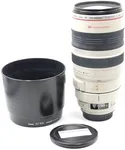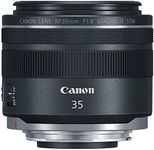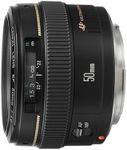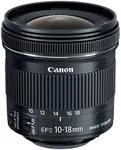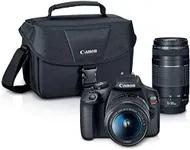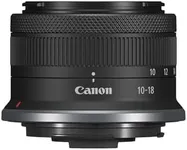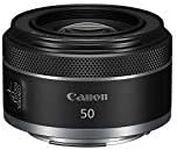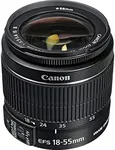Buying Guide for the Best Canon Lenses For Beginners
Choosing the right Canon lens can significantly enhance your photography experience, especially if you're a beginner. The right lens can help you capture the perfect shot, whether you're interested in landscapes, portraits, or action photography. To make an informed decision, it's important to understand the key specifications of lenses and how they align with your photography needs.Focal LengthFocal length is the distance between the lens and the image sensor when the subject is in focus, usually stated in millimeters (mm). It determines the field of view and how much of the scene will be captured. Shorter focal lengths (e.g., 18-35mm) are great for wide-angle shots like landscapes, while longer focal lengths (e.g., 70-200mm) are ideal for zooming in on distant subjects, such as wildlife or sports. For beginners, a versatile zoom lens with a range like 18-135mm can be a good starting point, offering flexibility for various types of photography.
ApertureAperture refers to the size of the opening in the lens through which light enters the camera. It is expressed as an f-number (e.g., f/2.8, f/4, f/5.6). A lower f-number means a larger aperture, allowing more light to enter, which is beneficial for low-light conditions and achieving a shallow depth of field (blurry background). For beginners, a lens with a maximum aperture of f/3.5-5.6 is typically sufficient for general photography. If you plan to shoot in low light or want more control over depth of field, consider a lens with a wider aperture like f/1.8.
Image Stabilization (IS)Image Stabilization (IS) helps reduce blur caused by camera shake, especially in low-light conditions or when using longer focal lengths. This feature is particularly useful for beginners who may not have the steadiest hands. Lenses with IS are marked with 'IS' in their name. If you often shoot handheld or in challenging lighting conditions, choosing a lens with IS can help you achieve sharper images.
Lens MountThe lens mount is the interface between the camera body and the lens. Canon lenses come in different mounts, such as EF, EF-S, and RF. EF lenses are compatible with full-frame and APS-C sensor cameras, EF-S lenses are designed for APS-C sensor cameras, and RF lenses are for Canon's mirrorless cameras. Ensure that the lens you choose is compatible with your camera body. For beginners, it's often best to start with lenses that match your camera's mount type to avoid compatibility issues.
Autofocus (AF) SystemThe autofocus (AF) system in a lens determines how quickly and accurately the lens can focus on a subject. Canon lenses use different AF technologies, such as USM (Ultrasonic Motor) and STM (Stepping Motor). USM lenses are known for fast and quiet focusing, making them ideal for action photography. STM lenses provide smooth and silent focusing, which is great for video recording. As a beginner, consider what type of photography you'll be doing most and choose a lens with an AF system that suits your needs.
Build Quality and Weather SealingBuild quality refers to the materials and construction of the lens. Higher-end lenses often feature metal parts and weather sealing, which protects against dust and moisture. While these features are more important for professional photographers who shoot in harsh conditions, beginners should still consider the build quality for durability. If you plan to shoot outdoors frequently, a lens with some level of weather sealing can be beneficial.


